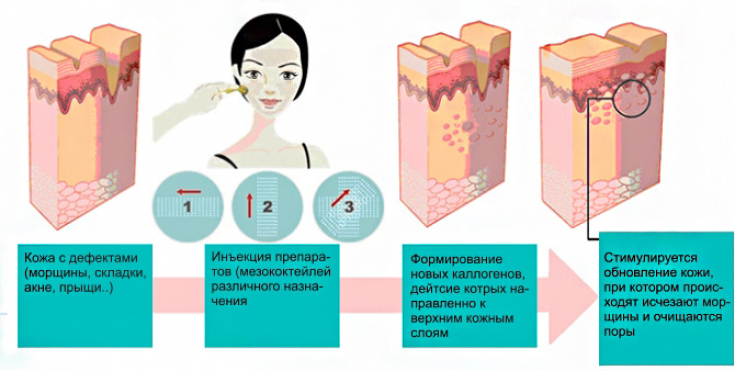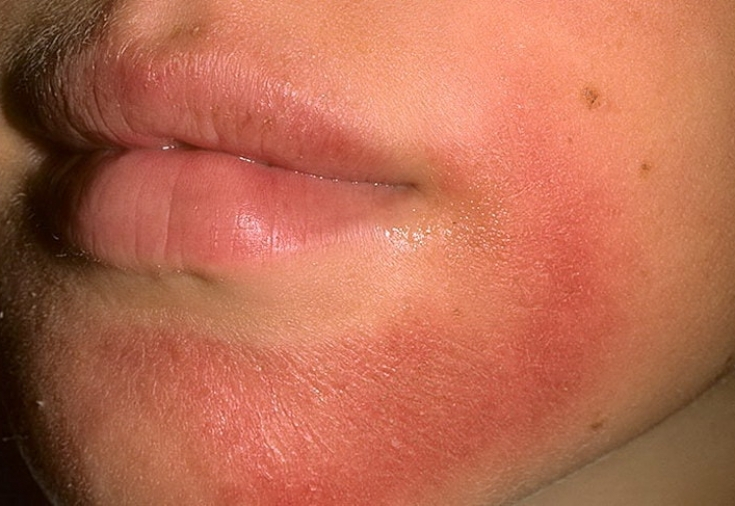Injection techniques in the world of the beauty industry are rightfully the most effective and sought-after procedures for facial and body skin care.
Mesotherapy – a modern way of treating and preventing dermatosis and signs of aging.
To date, the cosmetology market has been filled with various preparations for mesotherapy. Each specialist is obliged to understand the composition and properties of the meso-cocktails used.
On estet-portal.com read about the types of mesopreparations, their effects on the skin, as well as about possible adverse reactions from cocktail components.
Classification of drugs according to pharmacological action and effects
Mesococktails include many components of natural and synthetic origin. According to the pharmacological action, such preparations of mesococktails are distinguished:
1. angioprotectors;
2. substances that regulate biochemical reactions (vitamins, minerals);
3. amino acids;
4. preparations containing connective tissue components of the dermis (glycosaminoglycans, collagen-based preparations);
5. biologically active substances (sheep mesenchyme extract, sturgeon caviar extract);
6. DMAE (dimethylaminoethanol);
7. auxiliaries (acids, enzymes, anesthetics);
8. homeopathic (ginkgo biloba, artichoke extract);
9. lipolitics;
10. drugs of combined action.
Read also Instagram
There are also several groups of mesotherapeutic cocktails with different effects for the skin: revitalizing, lifting, depigmenting, antioxidant, lipolytics and preparations for hair restoration .
Characteristics of individual preparations used in meso-cocktails
Today, there are many drugs that are part of mesococktails. Consider the most popular components used in mesotherapy.
Hyaluronic acid – an important glycosaminoglycan, which is part of the connective, epithelial and nervous tissues.
Due to the properties of hyaluronic acid molecules to retain moisture, stimulate the division of fibroblasts, and enhance the synthesis of collagen and elastin, natural polymer has become an indispensable component of many cosmetics.
L-carnitine – refers to vitamin-like nutrients, lipolytic.
The component plays an important role in energy production, activates the breakdown of fats, promotes fat burning with a predominant effect on cellulite zones.
DMAE – is a precursor of acetylcholine in the skin, has a stimulating effect on fibroblasts, increases the synthesis of collagen and glycosaminoglycans, and also has a pronounced lifting effect. Indicated for age-related skin changes.
Mesotherapy preparations also include: ginkgo biloba, rutin, caffeine, phosphatidylcholine, vitamin C, argireline, biotin, lipoic acid and many others. meso-cocktails with peptide components
Mesotherapy products: what to use and for what
Despite the fact that meso-cocktails contain many useful and versatile substances, most of them have separate indications for use.
For the treatment of cellulite, the following mesopreparations are used: rutin with melilito, artichoke extract, ginkgo biloba, trental, carnitine, organic silicon, caffeine, sodium deoxycholate, as well as trace elements (zinc, iron, magnesium, calcium).
Organic silicon, DMAE, hyaluronate, multivitamins, vitamin C are used for skin lifting.
For the treatment of rosacea, drugs such as rutin, caffeine, vitamin C, centella asiatica, artichoke extract and ginkgo biloba are used.
For the treatment of the scalp, meso-cocktails with B vitamins, taurine, glutathione, biotin, DMAE, hyaluronic acid, minoxidil, zinc, copper peptides, and other oligopeptides are used.
For the treatment of acne and post-acne, meso-cocktails containing ascorbic acid, zinc gluconate, copper tripeptide, hyaluronic and azelaic acids, as well as vitamin complexes are widely used.
The most popular injection procedures: what are the differences
Specific and non-specific adverse reactions to mesopreparations
Specific adverse reactions in the patient may occur due to intolerance to certain drugs. These reactions are of an allergic nature and are divided into skin-allergic reactions of a delayed and immediate type (anaphylactic).
The first type is allergic dermatitis, which occurs 2-3 days after repeated contact with the allergen.
Erythema, pruritus and vesicular eruptions occur. Such a reaction can occur both to the drug and to the anesthetic and even the material from which the needle is made (nickel, chromium).
The cause of the immediate type of reaction is hypersensitivity to the components of the mesococktail.
Non-specific side effects such as pain, erythema and hematomas do not pose a danger to the patient's health and usually disappear on their own.Thank you stay with estet-portal.com. Read other interesting articles in the "Cosmetology" section. You may also be interested in:
What Helps Hair Loss: Possibilities of Injectables







Add a comment